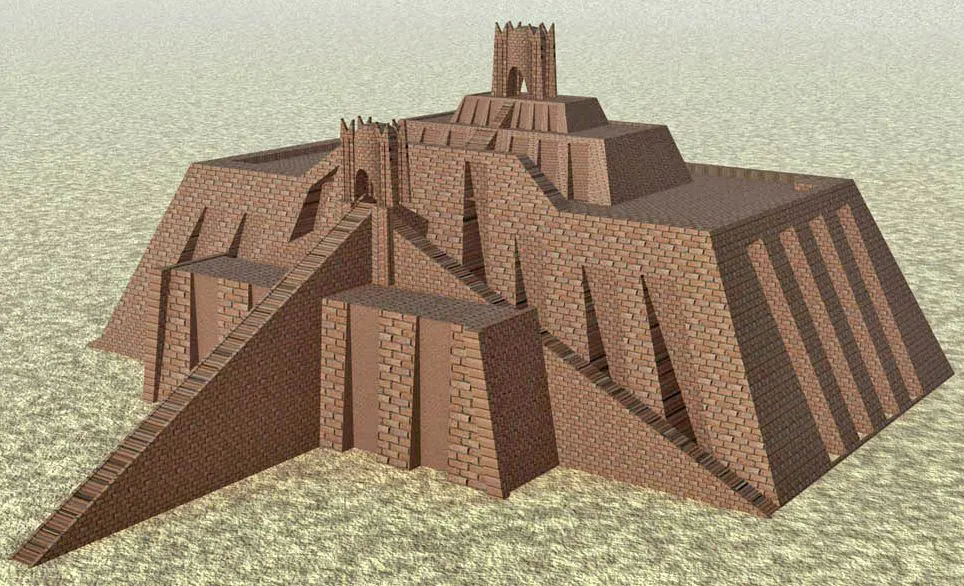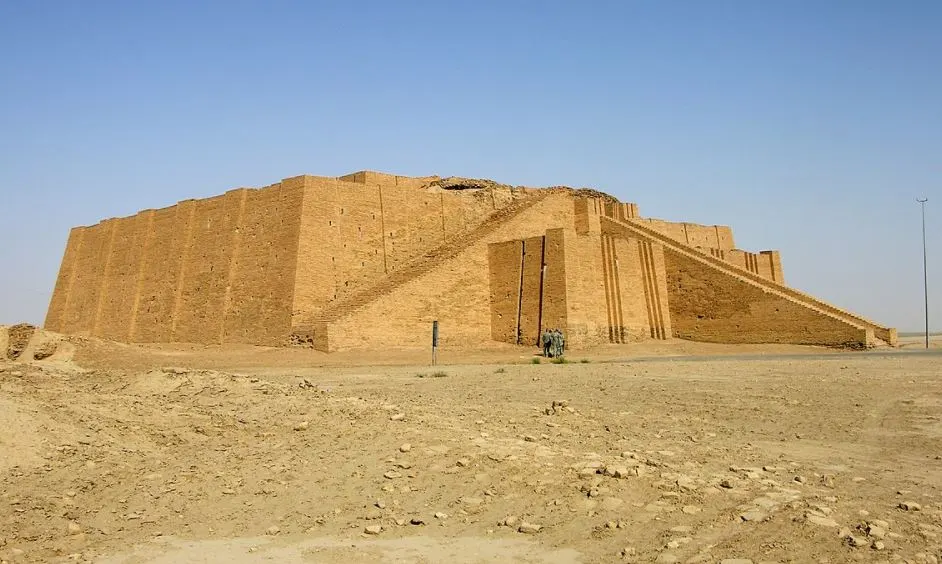The first civilizations emerged in the historic region of Mesopotamia, the area defined by the two major streams the Euphrates and Tigris Rivers.
Today, most of the ancient cities that thrived multiple millennia ago are nothing but ruins, including the great cities of Ur and Babylon, to name just a few.
A great ziggurat dominated the landscape in the southern part of modern-day Iraq, and in this post, we’ll take a closer look at some of the most interesting facts about the Ziggurat of Ur, an incredible Mesopotamian building.
1. The structure was once located in a city near the coast of the Persian Gulf
The Ziggurat of Ur, also sometimes referred to as the “Great Ziggurat of Ur,” is a large structure that once dominated the skyline of the city of Ur.
This was one of the most important cities in the “Neo-Sumerian Empire” and was founded much earlier during the “Ubaid Period” about 3,800 years ago.
Not much more than ruins remains of the city today, which was once located near the coast of the Persian Gulf in modern-day Iraq, but the coastline has shifted quite a bit since ancient times.
This was most probably the reason why the importance of the city started to decline around 530 B.C., potentially along with drought. This mighty city was completely abandoned by the 5th century B.C.

2. The original version of the Ziggurat was built in the 21st century B.C.
A ziggurat is a massive structure in the form of a stepped pyramid that was common in the ancient civilizations of Mesopotamia (even though they were built elsewhere as well).
Very few have been as well-preserved as the one in Ur except for the one at Chogha Zanbil in modern-day Iran.
Even though these structures weren’t as big as the largest pyramids built in ancient Egypt, they were still enormous structures. Especially because this one was completed during the reign of King Ur-Nammu (2112 – 2094 B.C.), the founder of the Third Dynasty of Ur.
The structure also took on the shape of a rectangle as opposed to the pyramids which had a square base. It had some astounding dimensions for a building constructed thousands of years ago:
- Length: 64 meters (210 feet)
- Width: 45 meters (148 feet)
- Height: 30 meters (98 feet)
The exact height of the structure remains up for debate because only the foundations of the structure survived into modern times.
3. The structure served multiple purposes in the ancient city of Ur
One of the gods that were worshipped during this time was “Nanna,” also known as “Sin” in Akkadian. The main purpose of the Ziggurat was to serve as a huge shrine for this god of the moon who was also the patron god of Ur.
This wasn’t the only purpose of the structure, though, because it also served as the administrative center of the city. Yes, that’s kind of like the ancient city hall of Ur.

4. The Ziggurat was completely rebuilt in the 6th century B.C.
Even though the Ziggurat of Ur was completed during the 21st century B.C., the structure had fallen into ruin already in ancient times.
When the final king of the Neo-Babylonian Empire, King Nabonidus, described the building in the 6th century, he mentioned that it was “impossible to know how the original structure looked like.” This means that only the foundation was visible back then as well.
Regardless, he completely renovated the dilapidated structure and included multiple additional layers. The original structure only had 3 and by the time the renovation was completed, it had 7.
This also means that the top section, which are actual remains of the ancient Ziggurat, date back from this Neo-Babylonian renovation project.
5. Only the lower façade of the structure is visible today
It would take until the year 1850 that both the city of Ur and its enormous Ziggurat were discovered and preliminary excavations started.
This was followed by a wide range of excavations with the major one taking place shortly after World War I between 1922 to 1934. This expedition was led by British archaeologist Sir Charles Leonard Woolley (1880-1960).
The façade we see today was rebuilt during the reign of Sadam Hussein, along with the grand staircases.
It’s assumed this was the height of the original version of the structure. The Neo-Babylonian version had two additional layers on top of this.

More interesting facts about the Ziggurat of Ur
6. The remains of the ancient city of Ur can be found just to the southwest of the modern-day city of Nasiriyah in southern Iraq.
This city is located along the Euphrates River and is the capital of the Dhi Qar Governorate in the southeast of the country. It’s situated about 360 kilometers (225 miles) southeast of Baghdad.
7. Even though the Ziggurat is considered to be one of the best-preserved structures of Ur, it’s not the only one of which the remains can actually be identified.
One of the most fascinating attractions here is the so-called “House of Abraham,” a structure believed to be the birthplace of the patriarch of all 3 Abrahamic religions, Abraham. This house is believed to be around 4,000 years old.
The remains of this house are situated just a short distance away from the Great Ziggurat.

8. Even though King Ur-Nammu started the construction of this massive building, he didn’t I’ve to see it completed. The Ziggurat was completed during the reign of his successor, King Shulgi.
He was far from a humble man because he declared himself both “King of Ur” and “King of Sumer and Akkad.” To top it off, he declared himself a god as well and “King of the four corners of the universe.”
9. Regardless of the megalomaniac behavior of King Shulgi, he did manage to turn Ur into the capital of a region that controlled just about all of Mesopotamia during his 48-year-long reign.
This resulted in the construction of countless Ziggurats in the region of which only a few remain today.
10. The main reason why many of these structures didn’t pass the test of time is that they were put together peculiarly. They were built from mud bricks and strengthened with additional mud.
The mud was combined with a black substance called “bitumen,” better known as “asphalt.” This was both to strengthen the structure and to make it waterproof.

11. Sir Leonard Wooley was assigned to the excavation of the site of Ur by both the Museum department of the University of Pennsylvania and the British Museum in London.
Apart from uncovering the Ziggurat, the expedition also uncovered most of the ruins of Ur, including numerous tombs of Sumerian kings and queens known as the “Royal Cemetery at Ur.”
12. Both the façade of the structure and the grand staircase were reconstructed based on the drawings that Wooley made during this excavation project.
Regardless of the reconstruction efforts, this only partially reveals the glory that was once one of the greatest structures in the world thousands of years ago.

